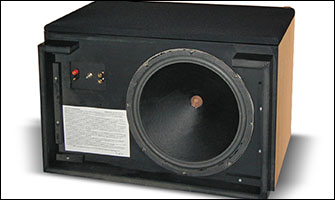1980-90 tech, they had a passive system to cut YOUR mains at 80, 100 up to 250 for PANNEL speakers at the time. WAY ahead of their time. THEN they enclosed the slot on the bottom. (A little history)

VMPS Bass system
The Passive Radiator (PR) located in the bottom of the cabinet already has a certain amount of mass attached to the center, by the factory. By adding or subtracting mass from the PR, it is possible to make system tonal balance warmer (higher Q) or tighter (lower Q). This is accomplished by changing an inert mass such as Mortite rope putty, the substance attached to the PR. You can buy additional putty at most hardware stores but your speaker is delivered over-damped (a bit too much putty), so that in almost all cases, you will tune the speakers by removing mass from the PR. Mass is accessible by inserting your hand into the slot formed by the base and the bottom of the cabinet. Removing a very small amount, no more than 1gram of putty, will be sufficient to make the adjustment.
Moving mass of PR is very low. Since a PR is driven equally over its entire surface by the active woofer's backwave, the diaphragm will move pistonically even if it is not rigid. The PR cones are treated paper. Paper is fine as long as you don't have to listen to their high frequency noise and distortion products. Facing the PR down and slot-loading it out the front filters such products out nicely.
We invented the slot-loaded PR and decided not to patent it, since we would spend our life in court defending against copies. We knew we were on the right track when we saw a Klipsch monitor at the AES in 1984 with a slot-loaded PR.
Fun ay....